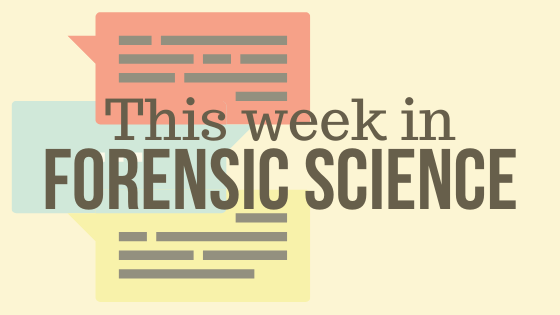No one has hours to scour the papers to keep up with the latest news, so we’ve curated the top news stories in the field of Forensic Science for this week. Here’s what you need to know to get out the door!
Divide and Conquer: New Algorithm Examines Crime-Scene Bullets by Segment (NIST – 3/26/2020)
The visual comparison [of bullets] does not allow the firearms expert to objectively quantify the level of uncertainty in the comparison. For example, what is the likelihood of obtaining the comparison result if the bullets in fact came from the same firearm or from different firearms? Courts now prefer such statistical information, which is, for example, routinely provided by DNA experts when they testify about genetic evidence.
Last year, NIST scientists premiered a computer-based comparison method that can provide this numerical information. The algorithm, known as congruent matching profile segments (CMPS), relies on detailed 3D maps.
Teeth Shows Signs of Impactful Events in a Person’s Life (Forensic – 3/27/2020)
Teeth are an indispensable tool for forensic investigators when it comes to correctly identifying victims. Dental records can be used to identify most victims, including the ones subject to heinous crimes that have left their bodies unrecognizable. And now, researchers at NYU have shown that teeth can do even more—they can reveal impactful events that occurred during a person’s life.
Othram Establishes Academic Program to Train Forensic Genomics Scientists (PR Web – 3/30/2020)
- Othram, the leading forensic DNA sequencing laboratory for law enforcement, has announced a program agreement with The University of Texas MD Anderson Cancer Center and its School of Health Professions to provide training for Molecular Genetic Technology (MGT) graduate students in the field of forensic genomics.
UC Berkeley Lab Pivots from Editing DNA to Processing COVID-19 Tests (Berkeleyside – 3/30/2020)
In a matter of days, a UC Berkeley science building has converted to a COVID-19 test processing center, with researchers hoping to enable up to thousands more coronavirus tests per day in the East Bay.
Did DNA Evidence Identify the Real Boston Strangler? (FOX News – 3/30/2020)
DNA was recovered from semen found in decades-old evidence from the murder of 19-year-old Mary Sullivan. The genetic material was cross-checked against the DNA of one of DeSalvo’s living relatives and finally, police had concrete evidence.
NIST Funding Manufacturing Institutes to Support Pandemic Response (NIST – 3/31/2020)
The U.S. Department of Commerce’s National Institute of Standards and Technology (NIST) has opened a funding opportunity for rapid, high-impact projects that support the nation’s response to the COVID-19 pandemic.
Israel Company “MyHeritage” to Set Up Corona Test-Lab in Israel (The Jewish Voice – 3/31/2020)
Israeli online genealogy platform MyHeritage has teamed up with the Chinese genetics research center and genome sequencing company BGI to utilize its technology in establishing a laboratory to test Israelis for the novel Coronavirus (Covid-19), boosting the country’s daily screening abilities by another 10,000 tests.
Genetic Genealogy Leads Florida Police to Arrest in 35-Year-Old Murder of Young Mother (Forensic – 4/1/2020)
As it turns out, newer technology was the key to making an arrest. Police identified Daniel Wells as a suspect after the DNA of a member of his family caught the police’s attention through a genetic genealogy database search. Officers with the Pensacola Police Department then surveilled Wells, collected one of his discarded cigarette butts, and matched his DNA to DNA left at the crime scene.
Mysterious Human Ancestor Finds its Place in Our Family Tree (Science – 4/1/2020)
When it comes to deciphering our ancient family tree, DNA from fossils is the new gold standard. But after about half a million years, even the best-preserved DNA degrades into illegibility, leaving the story of our early evolution shrouded in mystery. A new study of proteins taken from the tooth of an enigmatic human ancestor reveals their rough place in the family tree—and shows how ancient proteins can push beyond the limits of DNA.
WOULD YOU LIKE TO SEE MORE ARTICLES LIKE THIS? SUBSCRIBE TO THE ISHI BLOG BELOW!
SUBSCRIBE NOW!


